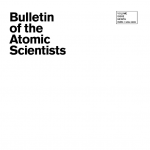The right planning now will save countless lives after a nuclear attack
By Dan Hanfling, Frederick M. Burkle, Cham Dallas | July 4, 2017
The public perception that there is no hope for surviving a nuclear attack has been an impediment to planning for the aftermath of such disasters. The perception is unjustified, but it shows how important good communication, collaboration, and coordination will be in responding to and recovering from nuclear attack. Properly planning for nuclear disaster requires authorities to follow four distinct steps: They must recognize that they have a moral duty to plan, close the existing medical-planning gaps we know about, communicate clearly to the public, and cooperate in international response. Read this article in the July/August issue of our subscription journal.
Together, we make the world safer.
The Bulletin elevates expert voices above the noise. But as an independent nonprofit organization, our operations depend on the support of readers like you. Help us continue to deliver quality journalism that holds leaders accountable. Your support of our work at any level is important. In return, we promise our coverage will be understandable, influential, vigilant, solution-oriented, and fair-minded. Together we can make a difference.
Issue: Bulletin of the Atomic Scientists Volume 73 Issue 4
Keywords: Civil defense, nuclear attack, nuclear weapons, preparedness
Topics: Nuclear Weapons















